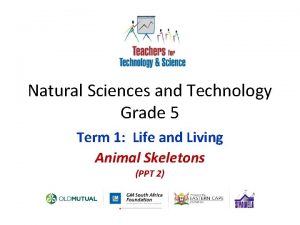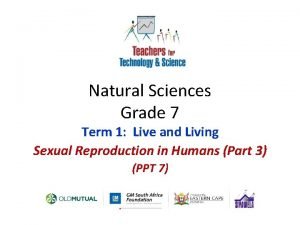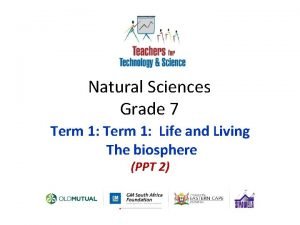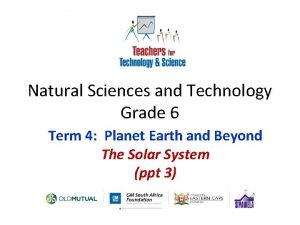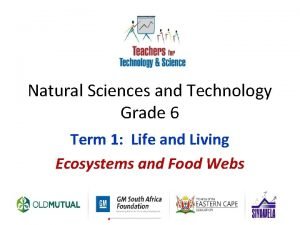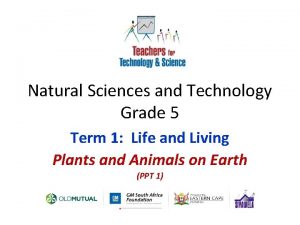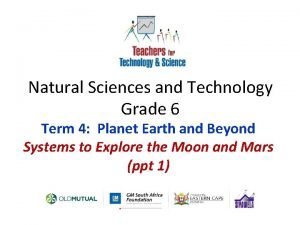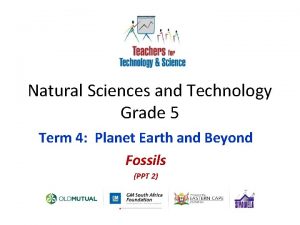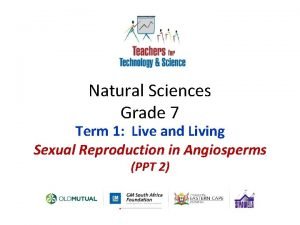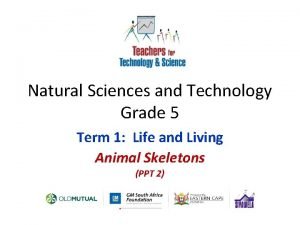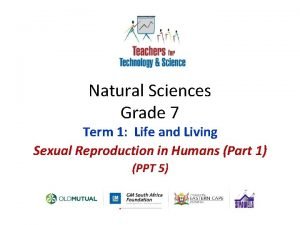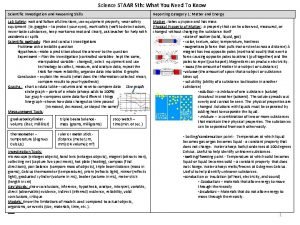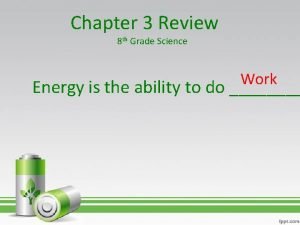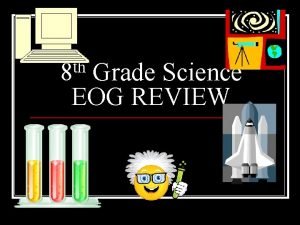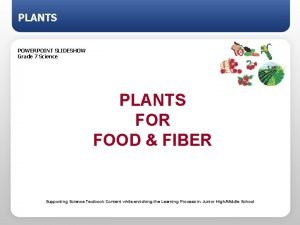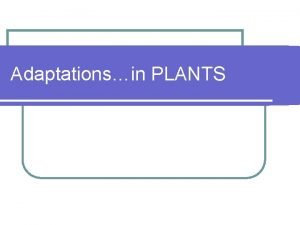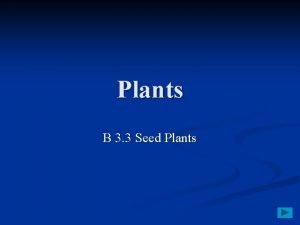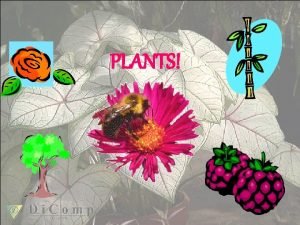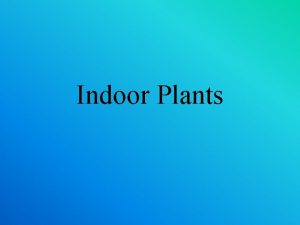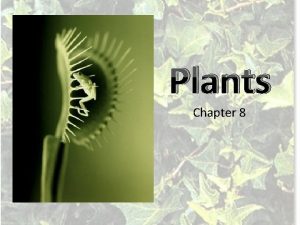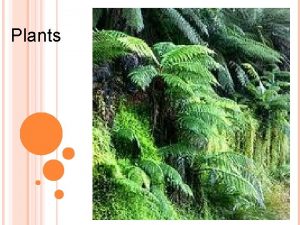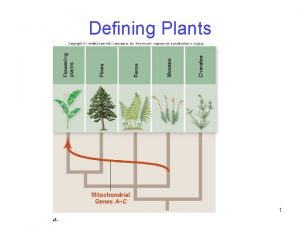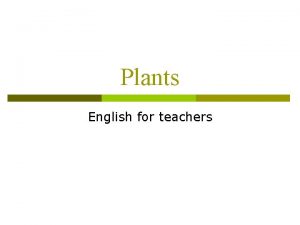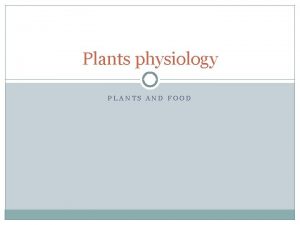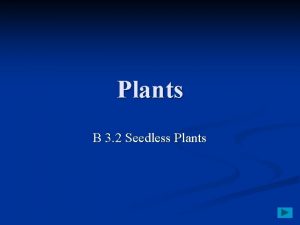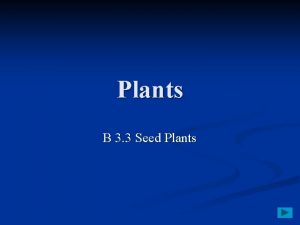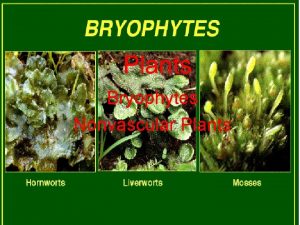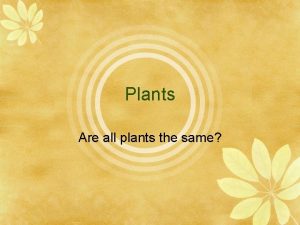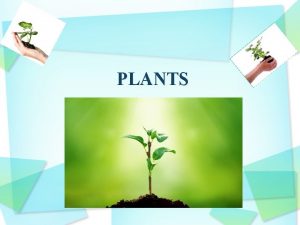Grade 2 Science Review Term 1 Plants are





























- Slides: 29

Grade 2 Science Review Term 1

Plants are living things. • Plants need water, sunlight, air, water, space and warmth. • • Plants get nutrients from the soil. Leaves take in air and sunlight to make food. The stem holds the plant up. The roots hold the plant in the soil and take in water.

Plant Traits ● ● The way plants look or act is called a trait. Plants get many of their traits from their parent e. g. colour, stem length, leaf shape. Some plants have many leaves, other plants have few or no leaves.

How do plants survive in different places? ● Plants in dry places have few or no leaves. They store water in their stem. ● Plants in wet places have large leaves. ● Plants in windy places can bend.


Animals with a backbone: 1. Giraffe 2. Lion 3. Cat 4. Dog 5. Crocodile 6. Flamingo 7. Horse Animals with no backbone: 1. Octopus 2. Starfish 3. Jellyfish 4. Caterpillar 5. Spider 6. Crab 7. Bee

Animal Groups

Mammals: • Have hair or fur • Have live babies • Mothers make milk to feed their babies • Are warm-blooded

Birds: • Have feathers • Have wings and a beak • Lay eggs • Are warm-blooded

Reptiles: • Have hard skin or scales • Lay eggs • Live on land or in water • Are cold-blooded

Fish: • Have fins and scales • Live in water • Lay eggs • Breathe with gills • Are cold-blooded

Amphibians: • Have wet skin • Live in water and on land • Have legs • Are cold-blooded

Insects: • Have 6 legs • Hard outer shell • Can walk or fly

How do animals grow and change? ● How an animal grows and changes is called it's life cycle.

Life Cycle of a Panda

Life Cycle of a Chicken

Life Cycle of a Butterfly

How do animals survive? 1. Adaptation An adaptation is a body part or a way an animal acts. ● ● ● Giraffes have long necks that help them reach leaves in the tops of trees. Camels have long eyelashes to protect their eyes from the sand. Camels can close their nostrils to stop sand from getting inside.

How do animals survive? 2. Camouflage • Camouflage is a way that animals blend into their surroundings. The colour or shape of an animal helps it hide. Camouflage helps animals hide from predators.

How do animals stay safe? ● Fish swim in a large group. ● Turtles stay safe by hiding in their shell. ● Skunks spray a bad smelling liquid to keep other animals away.

What is a habitat? ● A habitat is a place where plants and animals live. In a habitat animals find food, homes and the water they need. ● Hot and dry (desert) ● Wet and grassy (rainforest/ jungle) ● Cold and snowy (polar) ● Grassy and warm (grasslands)

What do animals get from their habitat?

Food Chains • • A food chain shows the order in which living things get the food they need. Some food chains are on land. Some are in the water. Some can be both on land in water. • Carnivores eat other animals. • Herbivores eat plants.


Food Web • A food web is two or more food chains that are connected.

How Habitats Change Describe how the habitat has changed:

How Habitats Change • 1. Drought – little or no rain for a long time • 2. Fire • 3. Flooding • 4. People • 5. Animals

Endangered • • When many of one kind of animal die and only a few are left, that animal is endangered. Animals can become endangered when people hunt them or build on their habitats.

Fossils • • • A fossil is what is left of a living thing from the past. Scientists can learn about habitats of the past from the plant and animal fossils they find. If a fossil does not match the habitat they were found in then scientists can tell that the habitat has changed.
 Antigentest åre
Antigentest åre Grade 7 term 3 ns
Grade 7 term 3 ns Grade 7 natural science term 2 notes
Grade 7 natural science term 2 notes Natural science grade 7 term 2 notes
Natural science grade 7 term 2 notes Grade 6 natural science
Grade 6 natural science Natural science grade 5
Natural science grade 5 Grade 4 term 3 natural science
Grade 4 term 3 natural science Grade 7 term 4 natural science
Grade 7 term 4 natural science Natural science grade 7 term 1
Natural science grade 7 term 1 Term 4 natural science grade 7
Term 4 natural science grade 7 Natural science grade 6 solar system
Natural science grade 6 solar system Ecosystem grade 6
Ecosystem grade 6 Plants and animals on earth grade 5
Plants and animals on earth grade 5 Natural science and technology grade 6 lesson plans term 4
Natural science and technology grade 6 lesson plans term 4 Grade 6 term 3 natural science
Grade 6 term 3 natural science Natural science grade 5 term 4
Natural science grade 5 term 4 Useful and wasted energy grade 7
Useful and wasted energy grade 7 Energy and change grade 7
Energy and change grade 7 Wind pollination diagram
Wind pollination diagram Animal skeleton grade 5
Animal skeleton grade 5 Insulating materials grade 7
Insulating materials grade 7 Life and living grade 7
Life and living grade 7 Reporting category 3 earth and space
Reporting category 3 earth and space Day 9 8th grade science staar review
Day 9 8th grade science staar review 5th grade science staar review
5th grade science staar review Grade 5 science mcas
Grade 5 science mcas Science solutions examples
Science solutions examples Chapter 3 review 8th grade science
Chapter 3 review 8th grade science 8th grade science eog
8th grade science eog What is your favorite subject answer?
What is your favorite subject answer?





